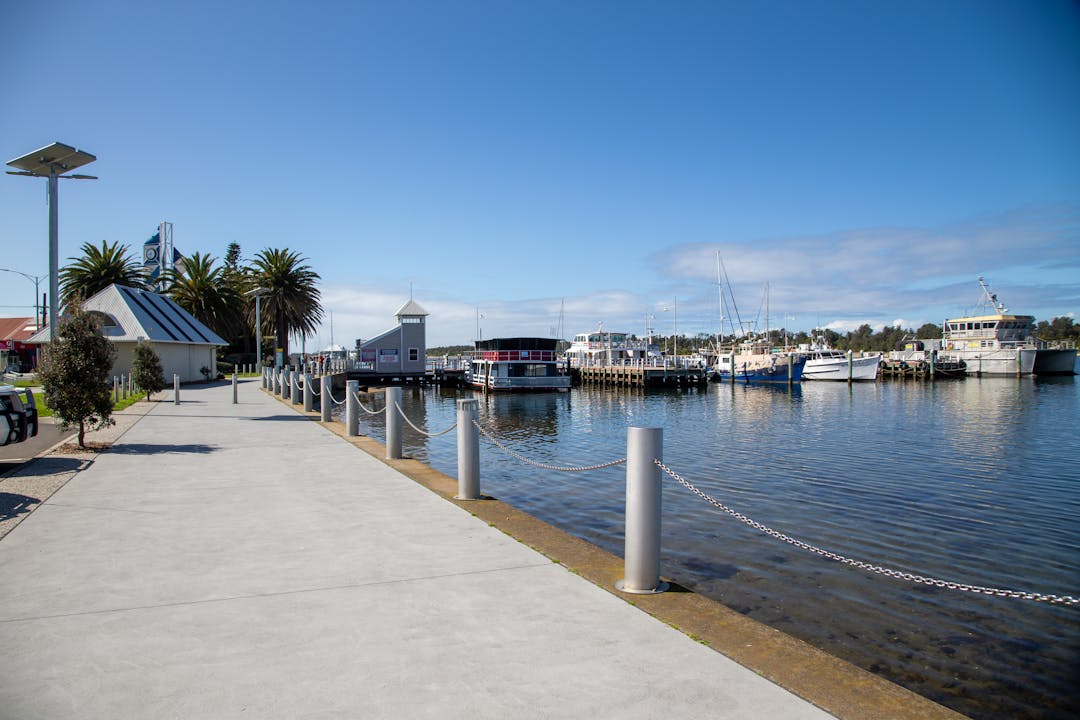Future water needs for Lakes Entrance and surrounding areas

We are working on a plan to better manage water for Lakes Entrance, Kalimna, Lake Tyers, Lake Bunga and Toorloo Arm.
Water is crucial for the region’s economy, supporting tourism, agriculture, fisheries, and residential growth. The region’s health and liveability relies on water, from providing safe drinking water and managing stormwater and wastewater, to sustaining ecosystems.
Our partners:
- East Gippsland Water (EGW)
- Department of Energy, Environment and Climate Action (DEECA)
This plan will consider how water, wastewater and stormwater services can contribute to water security, public and environmental health and wellbeing for the Lakes Entrance area.
An Integrated Water Management (IWM) Plan for Lakes Entrance is a priority in the East Gippsland IWM Strategic Directions Statement (SDS). The SDS lists opportunities identified through a collaborative process involving local government, water corporations, catchment management authorities, local Indigenous groups, health authorities, and DEECA.
Objectives:
- Document the need for IWM with particular focus on the need for water conservation in the context of a declining water supply
- Identify current water sources and uses for Lakes Entrance and surrounds
- Identify problems and opportunities for water management in the area
- Develop and undertake a stakeholder and community engagement process to capture a broad representation of views
- Identify and prioritise IWM projects, including developing criteria for assessing priority
- Develop preliminary costings and identify partnership arrangements for high priority projects
Update from Community Engagement - May 2025
In February and March 2025, we released a community engagement survey to gather local insights and priorities to inform the development of the Lakes Entrance and Surrounds Integrated Water Management Plan. We received 70 responses from community members across East Gippsland and beyond. The survey revealed strong community interest in water quality, environmental health, and sustainable planning. The feedback highlights both the challenges and opportunities in managing our region’s water resources, and will play a vital role in shaping future strategies that reflect the values and concerns of the people who live, work, and care for this unique landscape.
Findings from the survey include:
- 34% of respondents are residents from the Lakes Entrance and surrounding areas. Most had some (33%) or little (23%) understanding of Integrated Water Management.
- The top three priorities when it comes to managing water were; Water quality; Water/foreshore health; and Long-term water supply (water security),
- The highest rated influences causing water issues in the area -
- Housing and development - 67%
- Condition and capacity of stormwater infrastructure - 64%
- Population growth - 62%
- Climate change - 53%
- Factors that are working well to manage water issues are; Waterway management; Protecting natural assets for tourism and livability; and Water conservation
- A high proportion of respondents are happy to use Rainwater, Recycled wastewater and stormwater harvesting for water needs (excluding drinking).
 |  |

